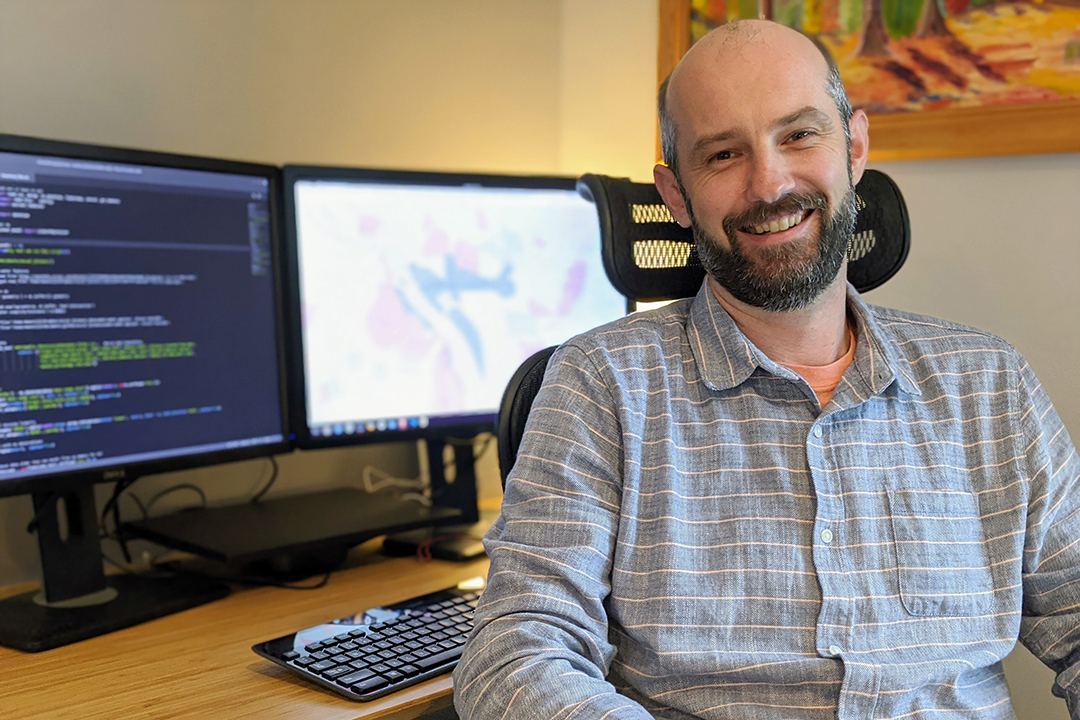Two Columbian College scholars are separately embarking on research projects that test the reaches of social distancing—from geo-spatialling mapping its progress in Washington, D.C., neighborhoods to examining how people’s COVID opinions affect their behavior. While both projects are still in their early stages, Associate Professor of Geography Michael Mann and Assistant Professor of Cognitive Neuroscience Gabriela Rosenblau are hopeful their findings will help public health officials determine the effectiveness of social distancing strategies and chart the direction of future COVID safety measures.
“Everyone in the scientific community is looking for something they can do to help out,” Mann said. “I'm trying to fill gaps for policymakers and health officials and whomever else can make use of [social distancing] data.”
Mapping Neighborhood Patterns
An expert in spatial event modeling, Mann has forecasted wildfires in California and droughts in Ethiopia. Now he is using GPS data to create a block-by-block map of the Washington, D.C., region, pinpointing social distancing behavior. By charting people’s locations—essentially, who is staying at home and who is not—Mann is collecting information on the degrees to which individuals within neighborhoods are following distancing guidelines. Once completed, the model will be able to detect patterns by comparing real-time information—such as the number of hours people are away from home—to social distancing metrics.
For his project, Mann is filtering massive amounts of commercial GPS data, anonymized location information compiled by the private frim SafeGraph from mobile devices and made available to academics and researchers for public health-related studies as part of a data-sharing agreement. Mann is designing an online dashboard for viewing and analyzing the data. Through the dashboard, he is hoping local and regional policymakers will be able to easily target areas requiring greater social distancing education. He plans to share his information with colleagues across the university, including those in economics and public health who might benefit from the geospatial data. “I think there are faculty who will want to take a deep dive into the factors that are driving behavioral patterns—whether economic or cultural or something else,” he said.
Tracking Optimism Bias
Rosenblau is in the midst of an international survey on decision-making during the COVID crisis. Along with colleagues from the Institute for Systems Neuroscience in Hamburg, Germany, and the University of California, San Francisco, she is focusing on whether optimism bias—our belief in the probability of becoming infected—influences behavior like complying with social distancing guidelines.
In March, her team began conducting interviews with more than 8,000 people in the United States, United Kingdom and Germany. Initially, their interviews revealed a strong optimism bias. “People estimate that negative events are less likely to happen to themselves than to a similar other person, while the opposite is true for positive events,” Rosenblau said.
The study will attempt to link an individual’s optimism to the likelihood of practicing social distancing or following hygiene recommendations. “It is possible that optimistic people will be more likely to spread COVID-19,” she said, “simply because they naïvely think they’re less likely to contract and transmit it compared to others.”
Through two additional surveys, Rosenblau and her research colleagues will assess if the biases change over the course of the pandemic.



